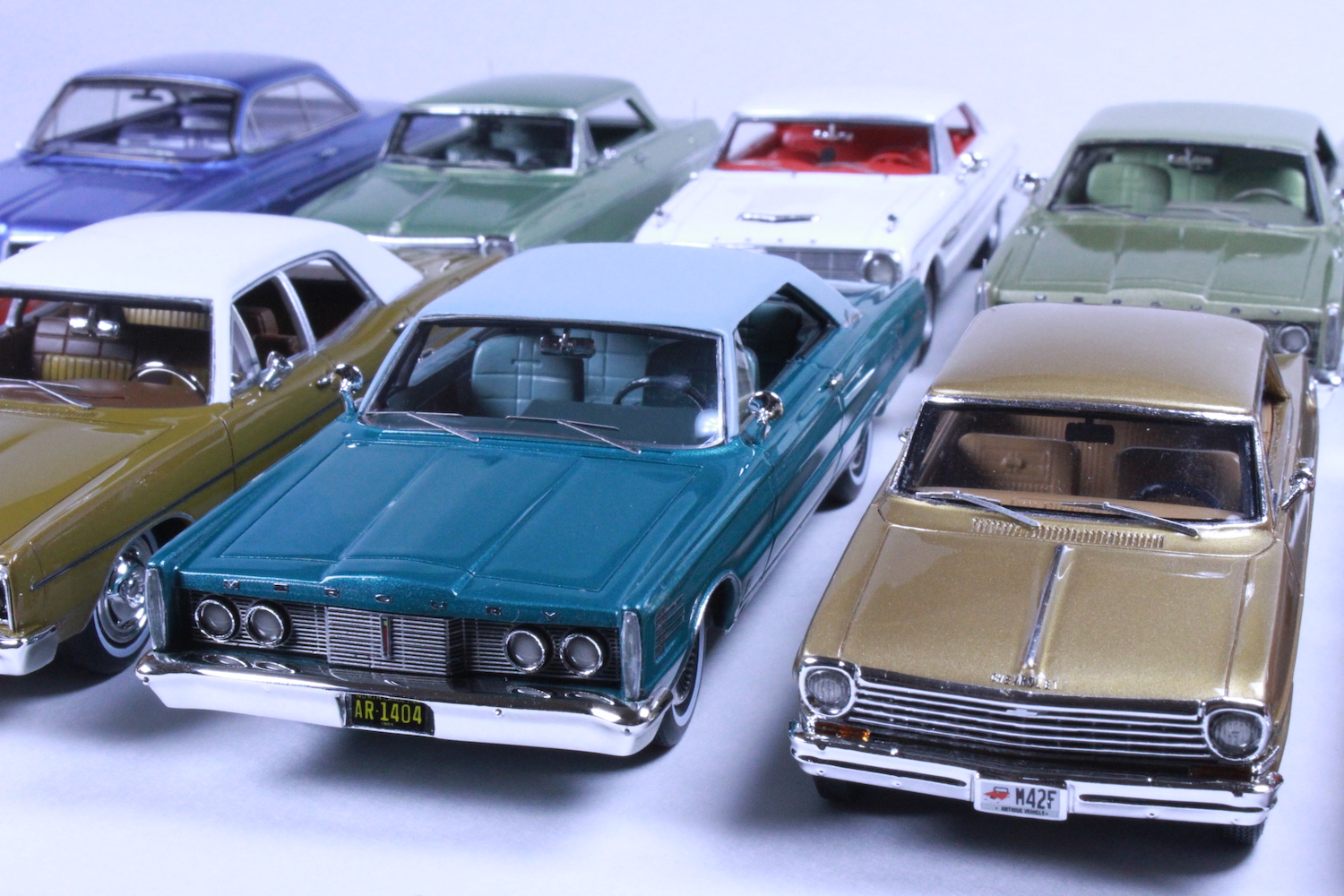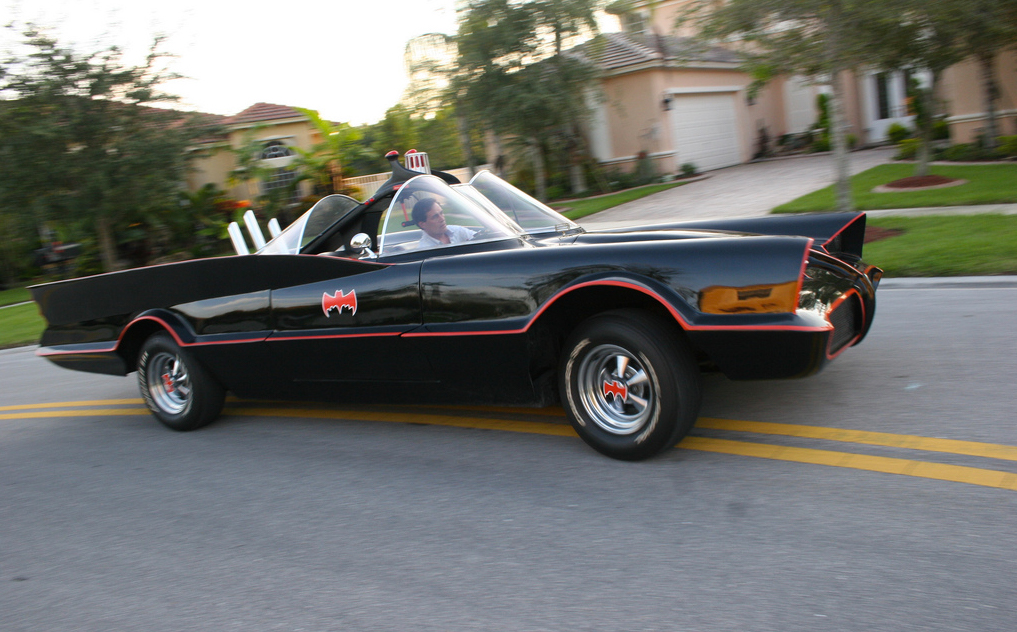Media | Articles
Goldvarg Collection preserves the everyday cars of the ’50s and ’60s in miniature scale
What’s the first car you remember as a kid? Some could probably say there was a ’57 Corvette or ’61 Jaguar E-Type in the family garage to inspire a lifetime of car addiction. For most, though, their first car memory was likely the family sedan, wagon, or minivan. For baby boomers, that was probably a Chevy Impala, Ford Country Squire, Pontiac Catalina, or any one of the myriad mainstream American models.
Those people are Sergio Goldvarg’s customers. It’s for the baby boomers like himself (he was born in 1957) that his company, Goldvarg Collection, builds replicas of the “everyday” cars of the ’50s and ’60s. You can’t drive them, though, because they’re only about four and a half inches long.
Collector and journalist

Goldvarg vividly remembers the American cars he saw while growing up in Buenos Aires. Today, collectors quickly buy out his 1/43-scale limited-edition diecast resin models of those cars. His 1961 Impala coupe, for example, sold out its entire 400-model run in two weeks. That’s about the average size run for any of Goldvarg’s models, with a run usually split between two colors.
An architect by trade, Goldvarg also owns a restaurant called Waffleworks in Hollywood, Florida, near where he lives. There, patrons can gawk at 900 model cars from Goldvarg’s personal collection, which totals over 12,000.
Marketplace
Buy and sell classics with confidence
Goldvarg began collecting 1/64 scale Matchbox cars as a boy and still has his first, a Merryweather fire truck, in its original box. In 1962, he began collecting the Solido 1/43-scale models from France, buying them with money he earned by restoring and reselling beat-up old models. That’s been his favorite scale since. By 1980, he’d added “journalist” to his resume, becoming the first in South America to write about model cars. He used that as a platform to help grow the model-collecting hobby there; his model manufacturing career was still eight years away.
In the beginning, there was heavy metal

“I started manufacturing because I was looking for a 1957 Oldsmobile model,” Goldvarg tells Hagerty. “I was in love with that car. I remember seeing them in Buenos Aires. But nobody was doing one, so I decided to do it myself. And I knew other collectors wanted one, too. That’s where I got the slogan, ‘From a collector, to the collector.’”
The first Goldvarg models in 1988 were white metal, made in his factory in Buenos Aires. In his small operation, he did the molds, casting, and chroming himself. As it turns out, France became one of his largest markets for white-metal ’50s and ’60s American cars.
Switching to diecast resin

In 2002, Goldvarg closed his factory and moved to Florida. After opening his restaurant there, he decided to return to model manufacturing, but this time with diecast resin.
“I like working with the resin, because you get the detail that’s not possible with white metal,” he says.
Goldvarg leaves the manufacture of model sports cars, muscle cars, and exotics to others. There are, however, a couple of Mercury Cyclones in his product line, with a ’66 and ’69 coming soon. The line runs the gamut from compacts like the Chevy II and Ford Falcon to some of the fancier big cars, like the ’62 Buick Electra and ’65 Mercury Park Lane Marauder.
“It’s all about the memories, for me and my collectors,” he says. “I love the cars of ’50s, ’60s, and early ’70s, the cars we grew up with.”
Goldvarg has reached back as far as the late 1940s. A new model due in 2020 is a 1948 Pontiac, like the one his father drove in Argentina. Other new additions will include two of America’s best-sellers from 1970, the Chevy Impala coupe and Ford Galaxie sedan. The more posh LTD outsold the Galaxie that year, but Goldvarg picked the lower-trim car to replicate—the choice of which models to produce is exclusively his.
“I am a collector, so I know what models are in the market,” he says.
The colors are all model and year-correct; they have to be, since all of Goldvarg’s models are officially licensed by Ford Motor Company and General Motors. Soon, he plans to add Chrysler, Plymouth, and Dodge models licensed by FCA.
“With licensing, they have to first approve the car I want to do, then they approve all steps in development, including color,” Goldvarg explains. “The European manufacturers don’t have this. For 1/43 scale in resin, I am the only one worldwide with the GM license. This assures the collector a certain level of accuracy and quality.”
He’s proud of his licensing record with the carmakers.
“Every time I send a prototype to Ford or GM, it gets approved without change. They know I am obsessed with detail. I do all the research, drawings, and plans myself.”
Goldvarg’s 1:1 scale cars

Among Goldvarg’s favorite models in his collection are Batmobiles from the 1960s TV show, in all scale sizes. The absolute tops for him, however, is the 1966 Batmobile that he drives. It’s one of the original nine replicas made in the 1960s to tour auto shows and exhibitions, and it’s autographed by Adam West, who played Batman, and Burt Ward, who played Robin.
Goldvarg occasionally dresses as the caped crusader from Gotham City and drives the Batmobile to promote charity events (such as Toys for Tots) and to visit children’s hospitals. He’s also got another movie car, a Volvo 1800 coupe from The Saint.
While Goldvarg loves making miniature versions of huge American cars, the rest of his collection features tiny European models, including a ’64 Morris Mini, a ’58 BMW Isetta, a ’58 VW Beetle, a Citroen 2CV, and a Fiat 600.
Pan Am makes the going great

Some of Goldvarg’s memories are a bit off the beaten path, as reflected by a new series of models. One such model is a vehicle used by international jetsetters that likely never exceeded 15 mph: a 1965 Ford F100 airport stairs truck, in Pan Am World Airways livery.
“In 1975, I took for the first time a Pan Am plane to go to Los Angeles,” recalls Goldvarg. “I was leaving from Ministro Pistarini Airport in Buenos Aires. In those days, you had to use the stairs to enter the aircraft, a Boeing 707, by the way. In this case, it was a Ford stairs truck.”
As with his car models, the airline vehicles show an obsession with detail.
“Everyone recognizes Pan Am, but not all know that the logo changed over the years,” he says. “We worked closely with the Pan Am Historical Foundation to get the colors, lettering, and logos correct for the vehicle years.” (Pan Am ended its business in December 1991.) A second flight to the U.S. on Braniff International Airways inspired airport vehicles in Braniff livery.
“It’s about my memories, but these things also resonate with my customers,” Goldvarg says.
Which model cars echo in your memories? Share your story below.






















